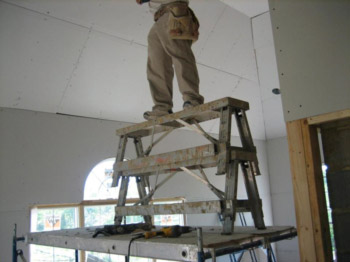Fall Hazards
I bet you didn’t know that in a recent year, OSHA recorded 1,048 workers that died on the job, with 335, or 32%, resulting from falls.

Each year, falls consistently account for the greatest number of accidents and fatalities. Events surrounding these types of accidents often involve a number of factors, including unstable work surfaces, misuse or lack of fall protection equipment, and human error. Many deaths and injuries from falls can be prevented with the use of guardrails, fall arrest systems, safety nets, covers, and barrier guards.
The following hazards cause a majority of falls:
-
Performing elevated maintenance without the use of proper fall protection makes for a serious fall hazard. Always wear a personal fall arrest system that is properly fitted. Match the system to the particular work situation and keep the potential free fall distance to a minimum.
-
Lumber, debris, slippery surfaces, and unorganized materials and equipment in the work area can cause serious falls hazards. Good housekeeping practices can eliminate these hazards and reduce falls.
-
Stairways and stairwells can also be serious hazards. Handrails should always be placed on stairs and stairwells but in most cases, failure to use the handrails has resulted in the most serious injuries. Also, never place or store materials or tools on stairways.
-
Floor openings and pits when not in use must always be barricaded or covered. Use planking, netting, or covers that are securely fastened to prevent accidental falls.
Chance Takers are Accident Makers!
Download flyer: STOTW_44_Fall Hazards.pdf (144.72 kb)

